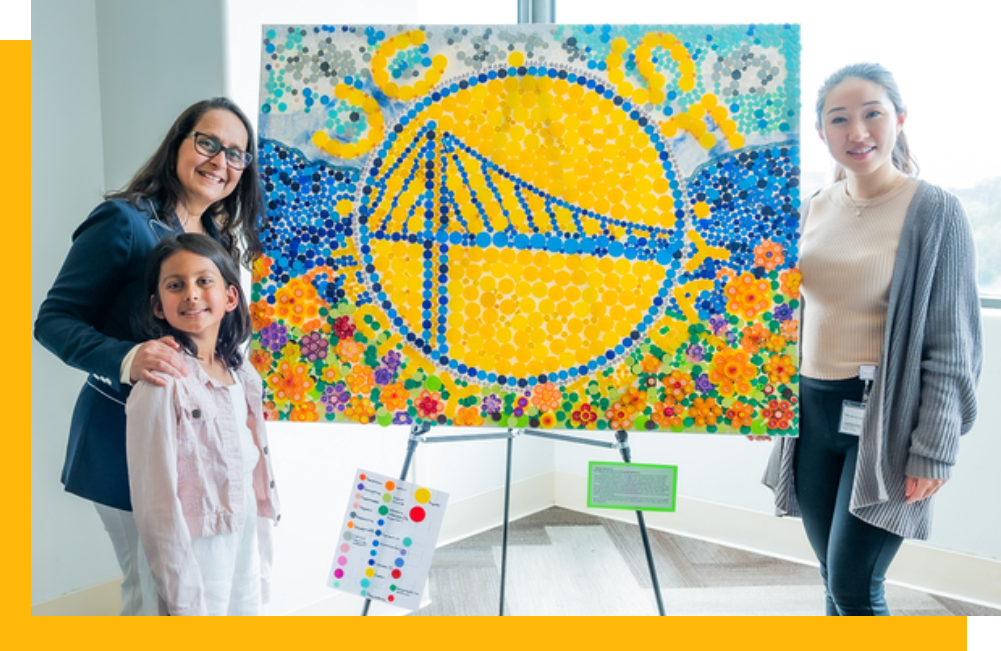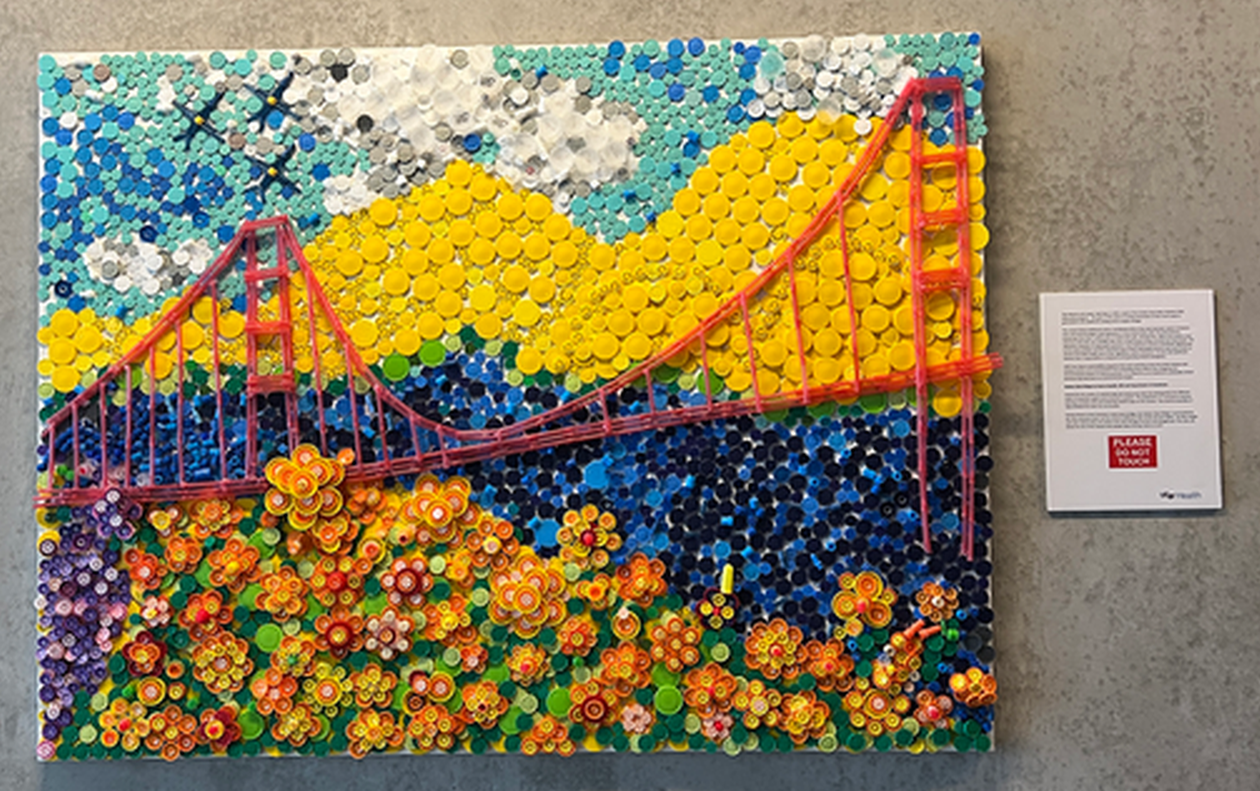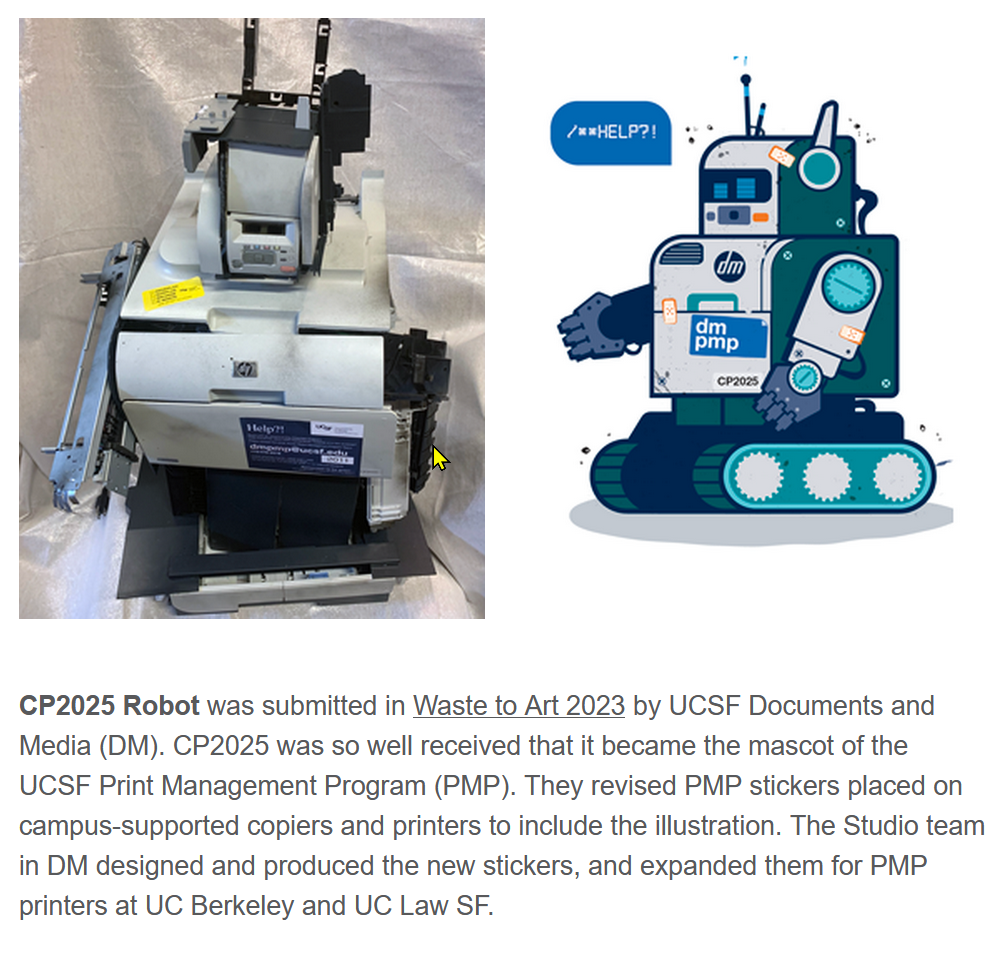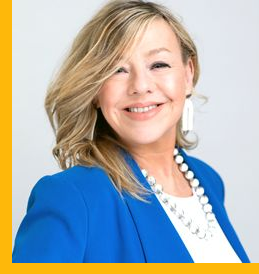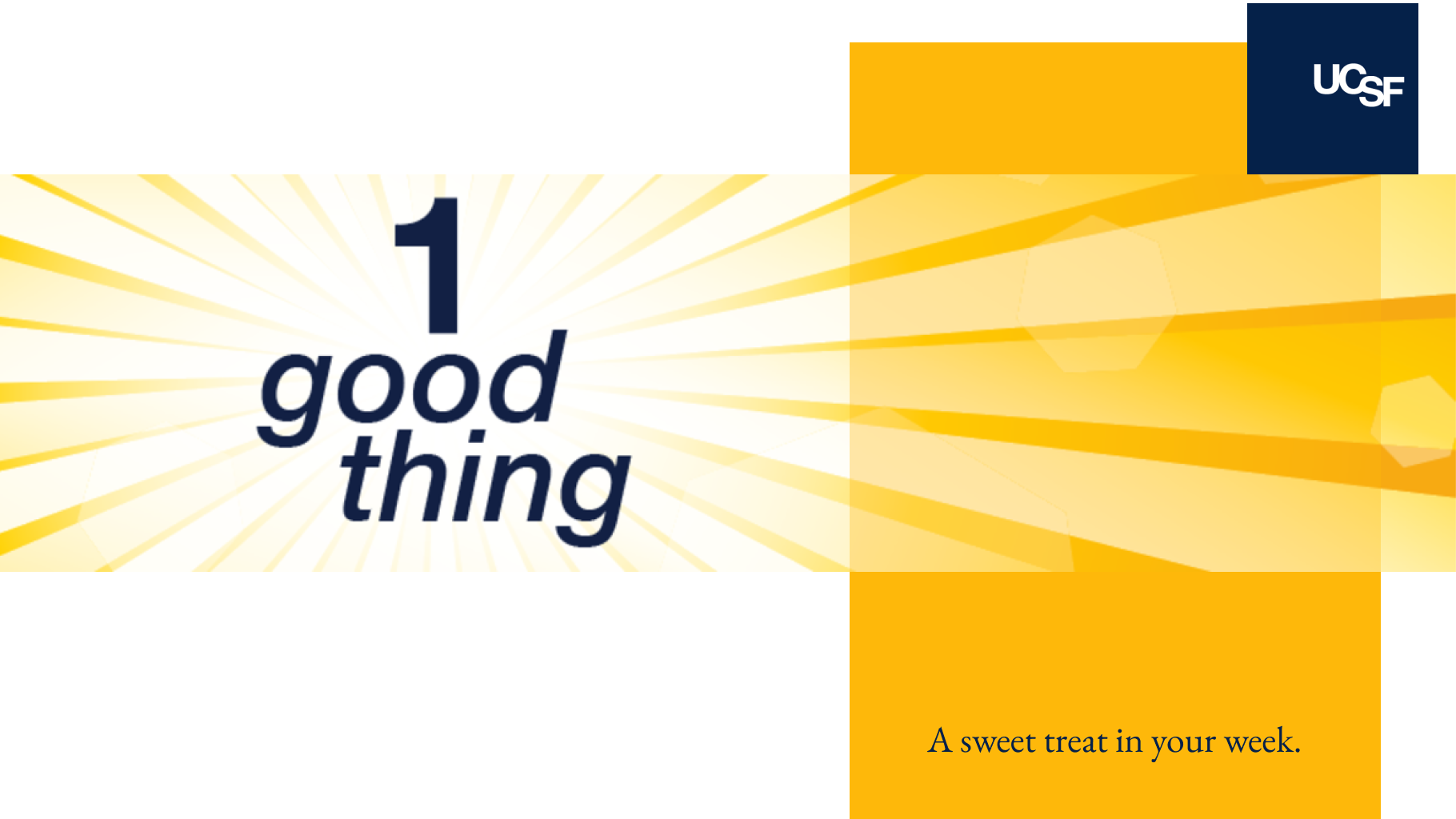
Kaiyi's Waste to Art
This week we talked with the Sustainability Utilization Analyst Kaiyi Wang, MS about her role at UCSF Health tackling supply waste and emission reduction and the Waste to Art challenge.
Healthcare generates a lot of waste as we live in a disposable culture and there are a lot of inefficiencies in medical practices in the U.S. However, it’s not all hopeless. There has been a lot of emphasis on sustainability in healthcare from the national, regional level, and within the UC Health system.
Kaiyi Wang (she/her)
Sustainability Utilization Analyst
UCSF Health
Kaiyi's Waste to Art
Waste to Art is UCSF’s annual challenge to transform medical and laboratory waste into incredible, inspiring art pieces. The Healthcare industry is the second-largest waste generator in the U.S. (following the food industry), producing more than 5 million tons of waste yearly. Eighty-five percent of the waste is non-infectious and ends up in landfills, with only a small fraction being recycled and repurposed. The research industry has similar waste issues. This challenge raises awareness by creating an exhibition showcasing upcycled artworks incorporating medical and non-medical waste. Some of the winning art pieces have been displayed around the medical centers and campus, including one of the Golden Gate Bridge made from anesthesia drug viral caps created by Seema Gandhi, MD, and the Department of Anesthesia, displayed in the lobby of the 654 Minnesota Street building. The event is supported by Dr. Gandhi, clinical professor in the Department of Anesthesia and the medical director of sustainability for UCSF Health, UCSF Office of Sustainability, and the University of California the Office of President Carbon Action fellowship program. We talked with Kaiyi Wang, MS, one of Dr. Gandhi’s teammates and fellow art creator, about her role tackling supply waste and emission reduction and the Waste to Art challenge.
Tell us about your role at UCSF.
I have a background in environmental health sciences, the intersection of environmental science and health science. I began working at UCSF Health under Dr. Seema Gandhi several years ago, focusing on the medical waste and emissions reduction project in clinical practices. The current healthcare practices present many opportunities for waste reduction and emission reduction in anesthetic gases. In waste reduction, we worked to implement reusable alternatives for medical devices and improve supply utilization. We are also collaborating with facility engineers to look at efficiency measures such as safely setting back the operating rooms' HVAC air exchanges during off-peak hours. We are expanding our efforts into other clinical spaces in addition to the perioperative area, such as pediatrics, ICU, inpatient, and Pharmacy.
In addition, we also conduct research in medical sustainability, looking at best practices that generate the least environmental impact for clinical practices. Sustainability education has also become a critical area of focus. We are working with faculty to incorporate a sustainability component into the general medical education (GME) curriculum and the residency programs. If the next generation of clinicians are more aware of the issues going into their practice, they can take the initiative to make more changes in the future.
How did you get involved in the Waste to Art challenge?
It was Dr. Gandhi’s idea, and I helped to execute her vision. She described her inspiration, “I grew up in India, repairing and repurposing toys, clothes, shoes, boxes; a circular economy was engrained into many aspects of life. I also enjoyed creating artwork with my daughter Maya, making things we would normally discard after one use like egg cartons, pistachio shells, and old clothes. Maya has always been proud of her unique art pieces and has grown to appreciate repurposing. My vision for this event was to convert hospital waste into captivating art, not only to repurpose discarded materials but also to raise awareness of environmental issues within healthcare settings.” She’s medically trained in India and the United Kingdom, and the medical practices there are less wasteful compared to the United States. The Waste to Art project raises awareness for waste using the fun creative side of it. The challenge also has a strong community aspect, involving the City and County of San Francisco zero waste team as judges and guests. Last year, we had judges from the de Young Museum.
The Golden Gate Bridge art (photo below) is displayed at 654 Minnesota Street building. What was it like to create this sustainable art?
Dr. Gandhi mobilized the whole anesthesia department to collect materials and create the art piece. We set up collection bins for the vial caps in the operating rooms. Once we had enough, we laid out the sketches on a giant blank canvas to create the vision of the artwork. We kept both art pieces in the lounge areas with the glue gun for anyone who wanted to participate. We invited residents and hosted a pizza party for them to help with gluing the vial caps. This year, we will attempt to create a piece that resembles the San Francisco painted lady, an iconic landmark in our beloved city, with vial caps.
What's one thing you'd like your colleagues to know?
Healthcare generates a lot of waste as we live in a disposable culture and there are a lot of inefficiencies in medical practices in the U.S. However, it’s not all hopeless. There has been a lot of emphasis on sustainability in healthcare from the national, regional level, and within the UC Health system. We are looking to implement more reusable alternatives and promote clinical practices that actively consume less without impacting patients’ safety. Additionally, we look to other developed countries and their clinical practices to contextualize how the United States is an outlier in waste generation. The two-time winner of the Waste to Art challenge PACU nurse Valentina Rozenson grew up in Russia, where fewer resources existed. Her upbringing enabled her to be crafty and creative using waste material. Similarly, Dr. Gandhi’s clinical training in the UK and India allowed her to scrutinize the practices here with a different lens. In the U.S., we live in an environment where excess material and waste is the norm. When people come from another culture and practices, they carry a different mindset.
FAVORITE COOKIE JAR TREAT?
Alfajores
Have a good story idea? Contact Kim LaPean. And sign up to receive the latest One Good Thing !

